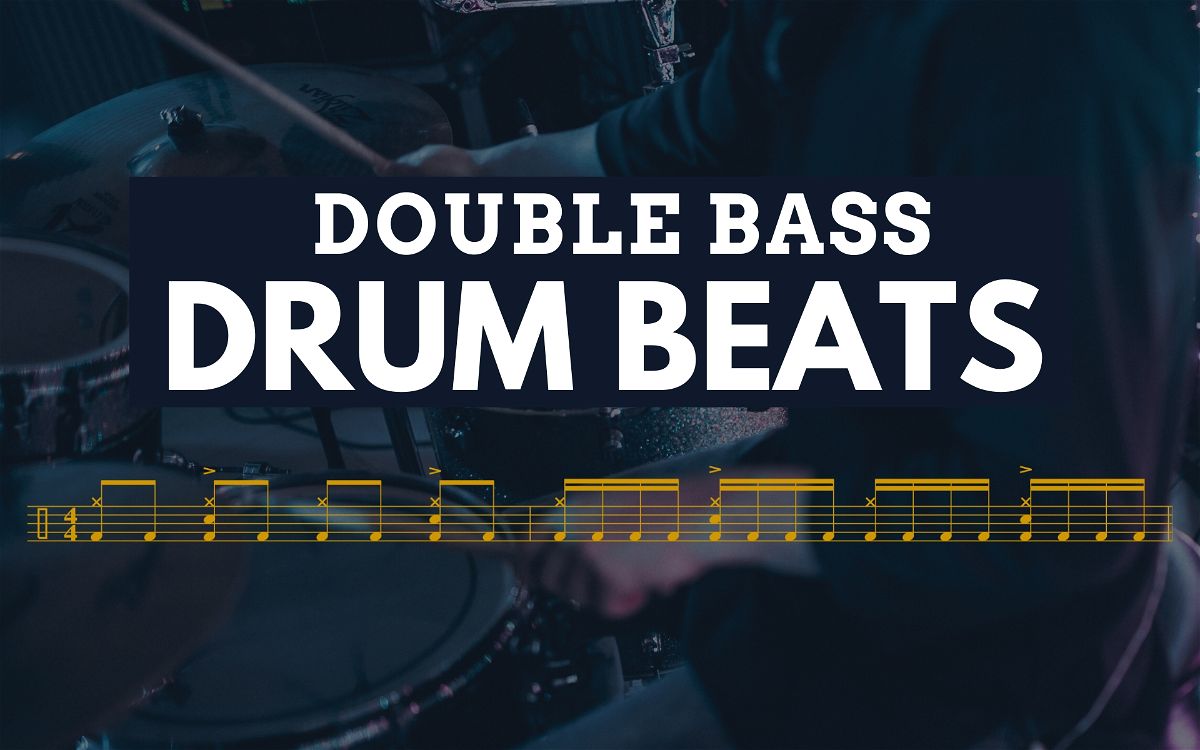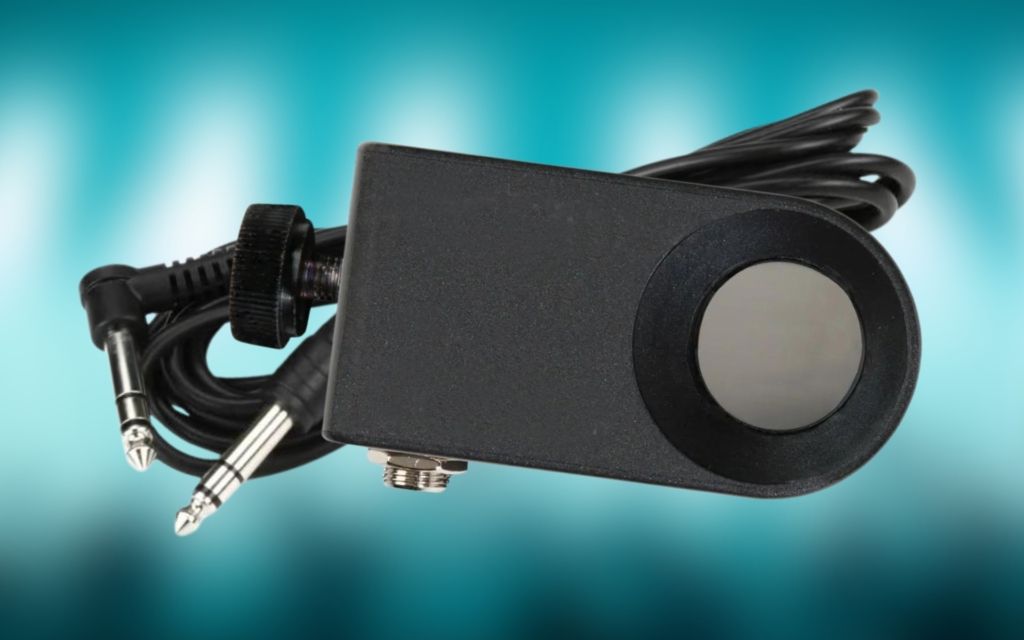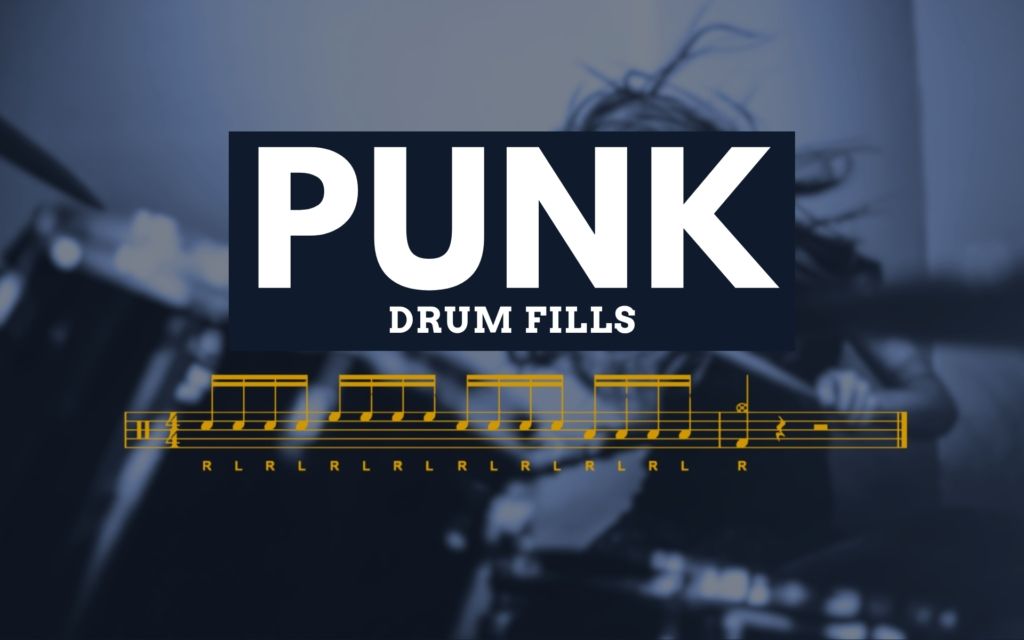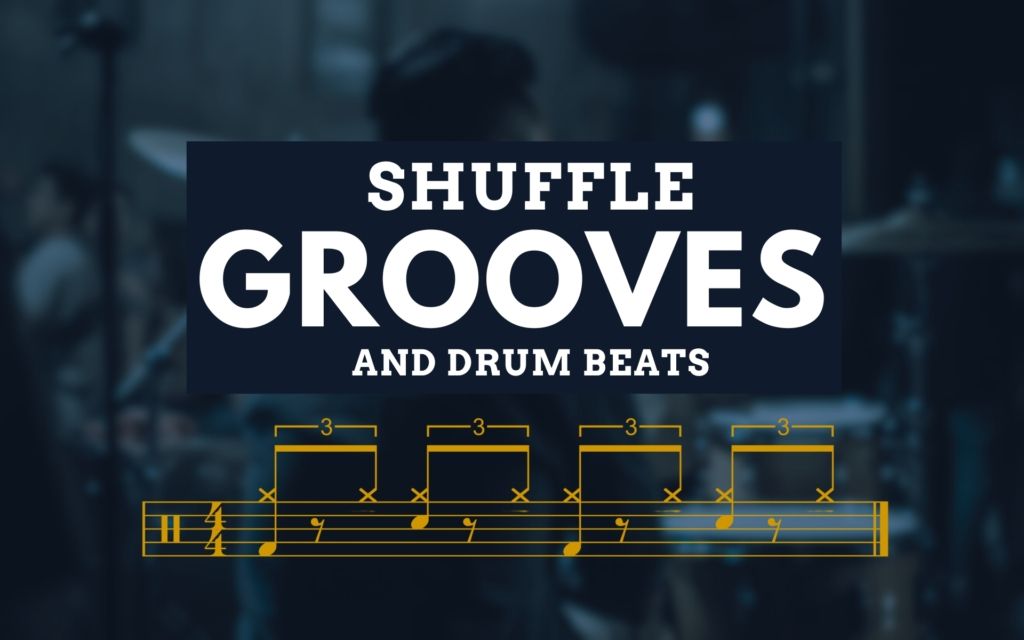Today’s lesson is tailor-made for beginners and we’re going to explore some basic double kick beats that are used in rock and metal.
We’ll take it step by step, breaking down each beat into several tempos and I’ll provide tips to help you build speed and control. I’ll also explain the different subdivisions in each exercise.
So, grab your double pedal, and let’s get right into it.
Click here to download the full PDF of transcriptions.
Contents
Tips for Double Bass Drumming
Achieving control and consistency with both feet is the key to double bass drumming. You want to practice slowly and build up speed using a metronome, with an emphasis on getting the same power and accuracy with both feet.
I personally like to play heel up on my pedals. I find it offers more power, speed, and control, and utilizes more leg muscles generating greater force and momentum.
I’d also recommend setting the spring tension of your pedals to medium or high. If there’s not enough bounce back from the pedal you won’t be able to achieve faster speeds.
We’re going to alternate between right and left feet. For each exercise, we’re going to start off slow, then up the tempo. Let’s kick things off with number 1.
Double Bass Beat 1

In the first bar, or measure, of exercise 1 we’re just going to be playing quarter notes on the kick drum. Each kick stroke corresponds with a cymbal hit on 1,2,3,4.
Then in the second bar we’re going up a subdivision to eighth notes on the kick, which will be 1 ‘and’ 2 ‘and’ 3 ‘and’ 4 ‘and’. The cymbal and snare placement will be exactly the same.
This is a simple exercise just to get yourself a little more comfortable with the motion of alternating your feet.
Double Bass Beat 2

Once we’ve nailed the first exercise, we can move on to the next subdivision which is sixteenth notes on the kick. In the first bar we’re going to play the eighth notes the same as what we just learned before – 1 ‘and’ 2 ‘and’ 3 ‘and’ 4 ‘and’.
But in the second bar we’re progressing to sixteenth notes which are counted as 1-e-and-a, 2-e-and-a, 3-e-and-a, 4-e-and-a.
Remember the speed hasn’t got faster, we’re just playing twice as many kick drum notes because the note values have halved. (show rhythm pyramid here)
These rolling 16th note kick drums are a staple in metal music, and bands can feature these at speeds of 200 beats per minute and beyond. You’ll want to spend time nailing these slowly first, and getting them accurate with your timing and power.
Double Bass Beat 3

Now we’ve got the hang of all these different subdivisions, we’ll need to practice applying them in different combinations, which is more often how they appear in modern songs.
Instead of just playing rolling double kicks, we’re now getting used to the stop start nature of different rhythms. We need to understand the response and playing feel of our pedals so that we know exactly when to react after the rebound and press down so that we play in time.
Both bars in this exercise progress from quarter, to eighth, to sixteenth note subdivisions. The end of each bar is different though. The first bar ends with a quarter note kick, the second bar finishes with sixteenth note kicks.
Remember to lead with your strong foot. For quarter notes I like to just use my dominant foot, and for eighth notes and sixteenth notes I’ll alternate.
Double Bass Beat 4

In this exercise we’re still combining all the same subdivisions we now know. Except there’s one grouping that might feel slightly more awkward. We’re now combining two sixteenth notes with an eighth note which is ‘3-e-and’.
In the second bar it’s ‘1-e-and’ ‘2-e-and’, 3 ‘and’, 4-e-and-a. (The two sixteenth note and eighth note grouping is played right, left, right.
Double Bass Beat 5

Now instead of playing quarter notes on the cymbal, we’re doing eighth notes to help give it a bit more of a driving feel.
We’re also adding a new grouping of subdivisions, similar to the previous exercise with the two sixteenth notes and an eighth note, except this time it’s reversed. Now it’s an eighth note and two sixteenth notes, which features twice in the first bar. It’s 1-and-a, 2 ‘and’, 3-and-a, 4 ‘and’.
This subdivision grouping creates more of a galloping sort of feel, and I like to play this grouping of notes on the kicks with right, right, left.
Double Bass Beat 6

Now we’re changing the feel, going toward more of a punk or a thrash vibe by adding in more snare hits and moving them to the ‘and’ of each beat. They’re now on the 1 ‘and’, 2 ‘and’, 3 ‘and’, 4 ‘and’.
We’re also keeping the kicks rolling in the first bar, and in the second bar shorter and more staccato groupings of only two sixteenth notes on the kicks.
Double Bass Beat 7

In this exercise we’re now going to be exploring eighth Note triplets, which are rolling on the kicks. The snare is back on the two and the four, and the cymbals are quarter notes just on the 1,2,3,4.
Ensure you’re not sloppy with these double kicks, especially if the triplet feel is unfamiliar to you. You really want them to be as accurate and precise as possible. And make sure the kicks line up nicely with the snares on the two and the four.
Because we’re doing alternate right, left, right, left kicks, whenever we hit the snare it’s going to line up with a left foot kick drum which might feel awkward at first but just keep practicing and it’ll feel more natural.
Double Bass Beat 8

The last exercise we’re going to look at is sixteenth note triplets, which is the iconic rapid fire double kick section of Metallica’s One.
It’s going to be tricky to get at first but just be sure to start off slow and don’t get ahead of yourself.
Outro
I hope you found these beats helpful and that they will open up more playing possibilities with your double bass drumming.
Remember, patience and consistent practice are key to mastering double bass drumming, so don’t get discouraged if progress feels slow at first. Keep at it, and you’ll see improvement over time.









